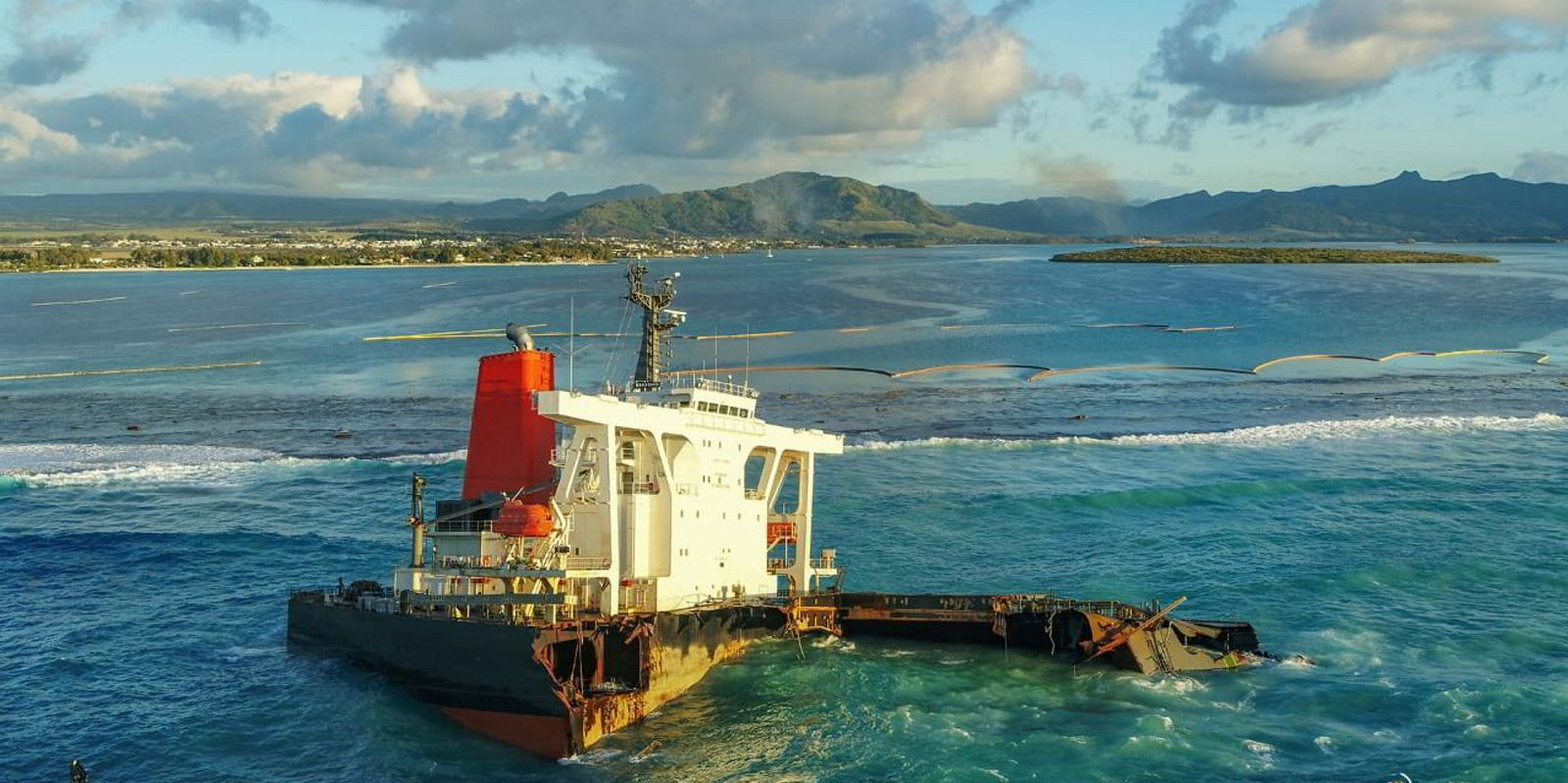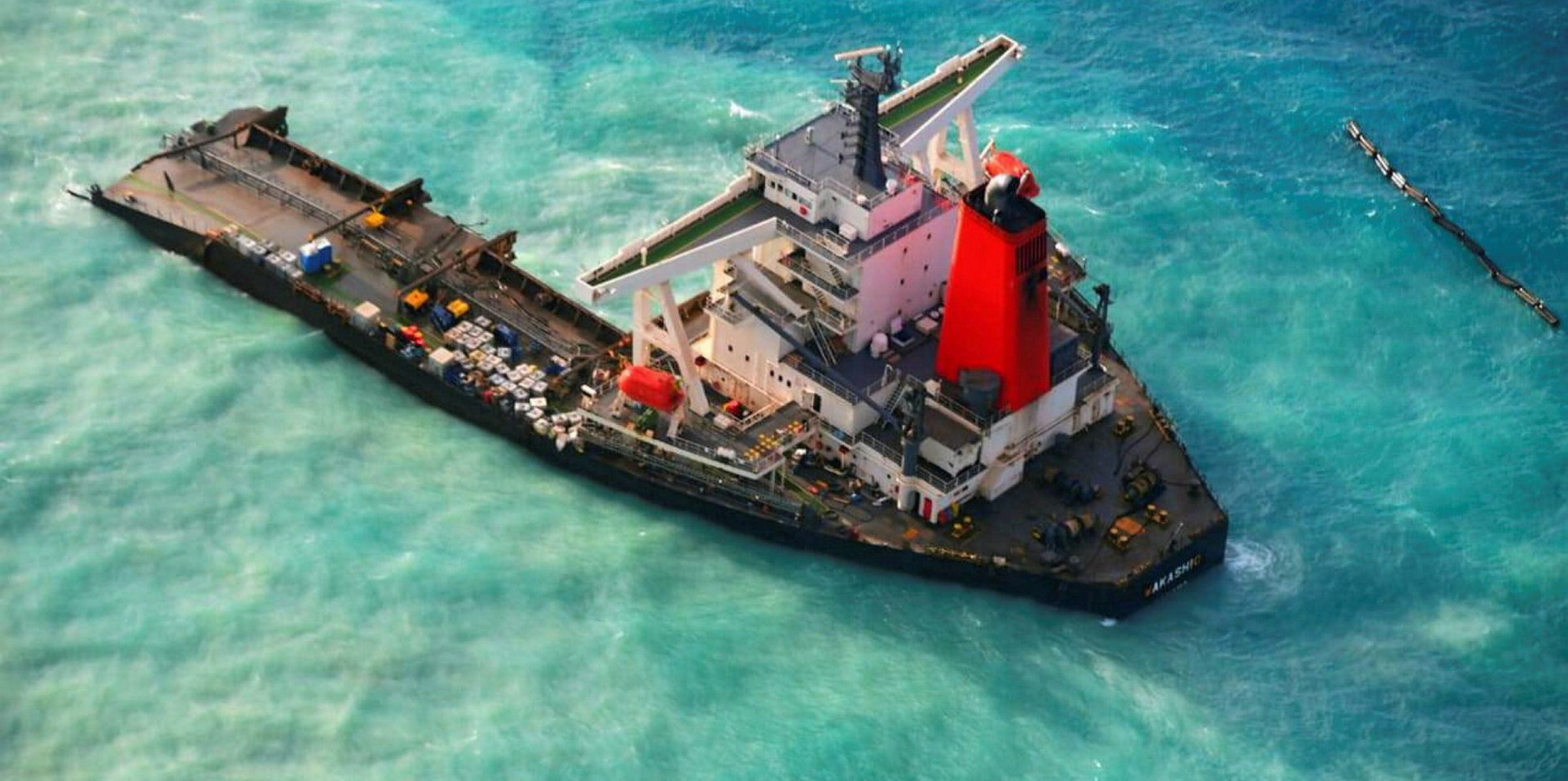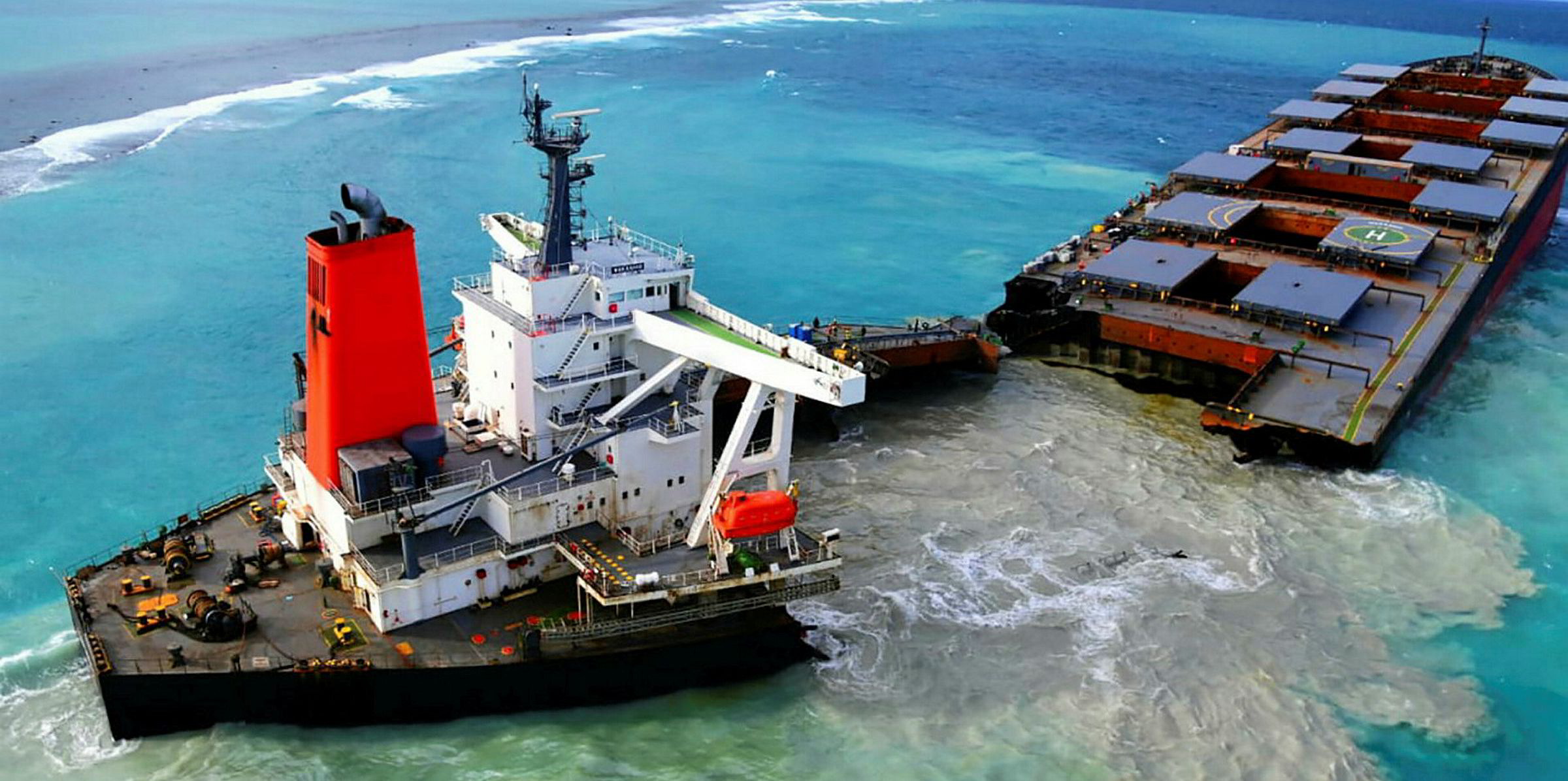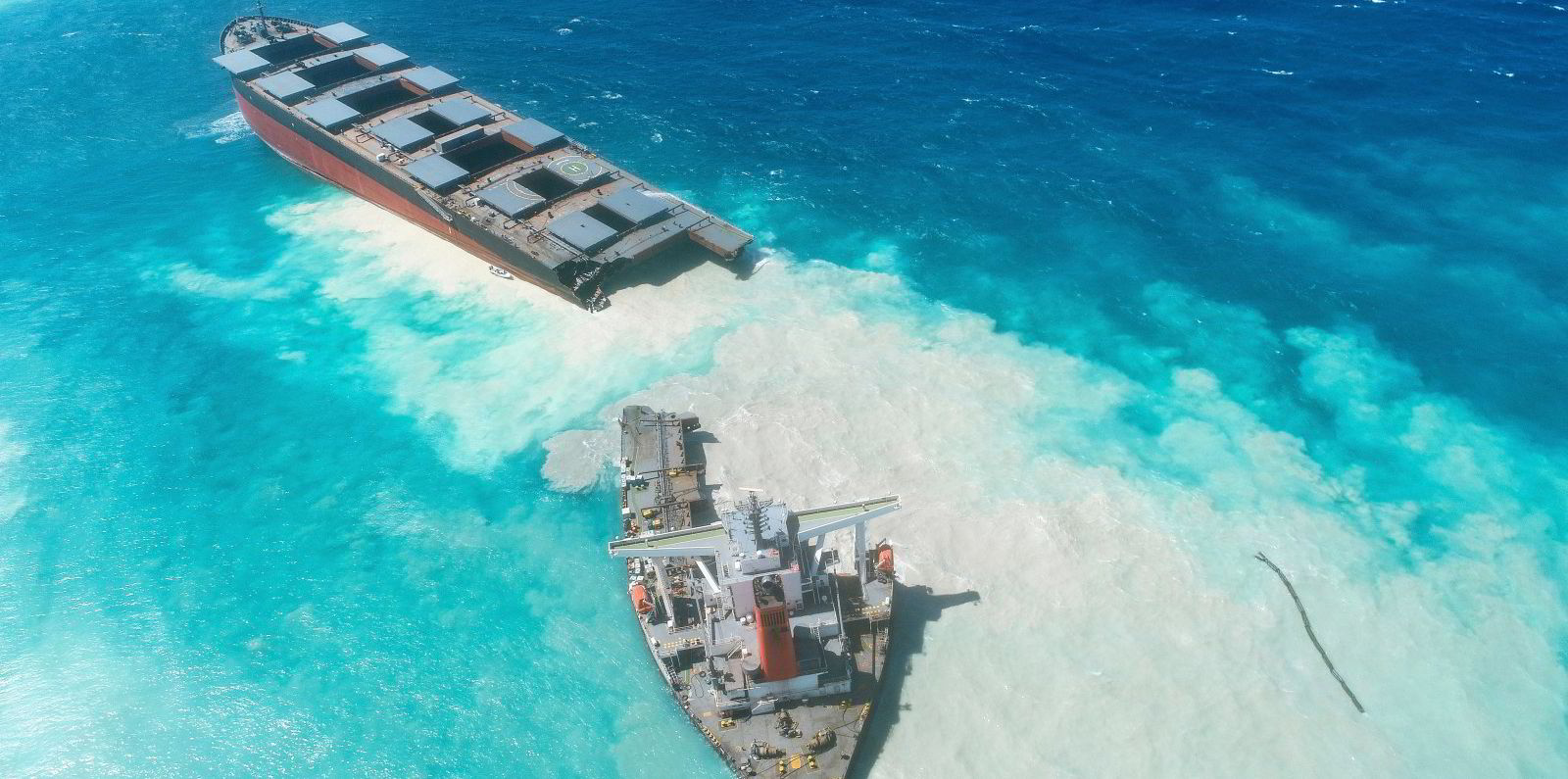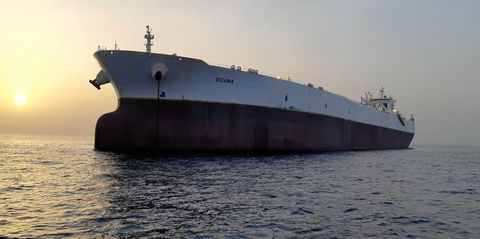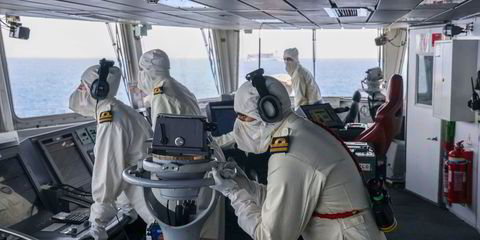Mitsui OSK Lines, charterer of the bulk carrier Wakashio that grounded off Mauritius in July causing widespread pollution, said the ship's crew had attempted to sail into an area “within communication range of mobile phones”, prior to the accident.
Based on evidence from the crew, obtained by the ship’s owner Nagashiki Shipping, MOL said the crew had changed the vessel's planned course from 22 nautical miles (41 km) from the Mauritius coastline to just five nautical miles and then two nautical miles.
The 207,000-dwt Wakashio (built 2003) ran aground 0.9 miles from the coastline.
MOL said the crew had attempted the change direction by using a chart that did not have sufficient scale to confirm distance from the coast and water depth.
MOL added that the crew had also neglected to carry out adequate watchkeeping.
MOL said the crew had previously approached other coastlines “on several occasions” prior to the grounding.
“They may have taken unsafe behaviors due to overconfidence that stems from complacency,” MOL said.
However, MOL did not address the question of why the crew took the desperate action of sailing so close to shore to secure a mobile phone connection.
The vessel's owner, Nagashiki Shipping, has declined to comment on the communications systems available to crew on the ship.
It is generally recognised that crew are operating under stressful conditions during the Covid-19 pandemic with uncertainties over whether they will be able to return home.
They also have concerns over the well-being of their families during the pandemic.
Many leading shipowners and charters have upgraded communications systems for crew during the pandemic.
MOL said it plans to install high-speed and large-capacity communication systems on all its ships and requests that owners of its chartered vessels do the same.
MOL said it would be investing ¥500m ($4.8m) in a safety campaign to make sure such an accident does not happen again on its owned or chartered fleet.
This will include circulars and educational programmes on the use of nautical charts and the establishment of a grounding risk monitoring system, and cameras placed on the bridge.
It also wants to increase dialogues with shipowners from which it charters vessels and senior officers.
